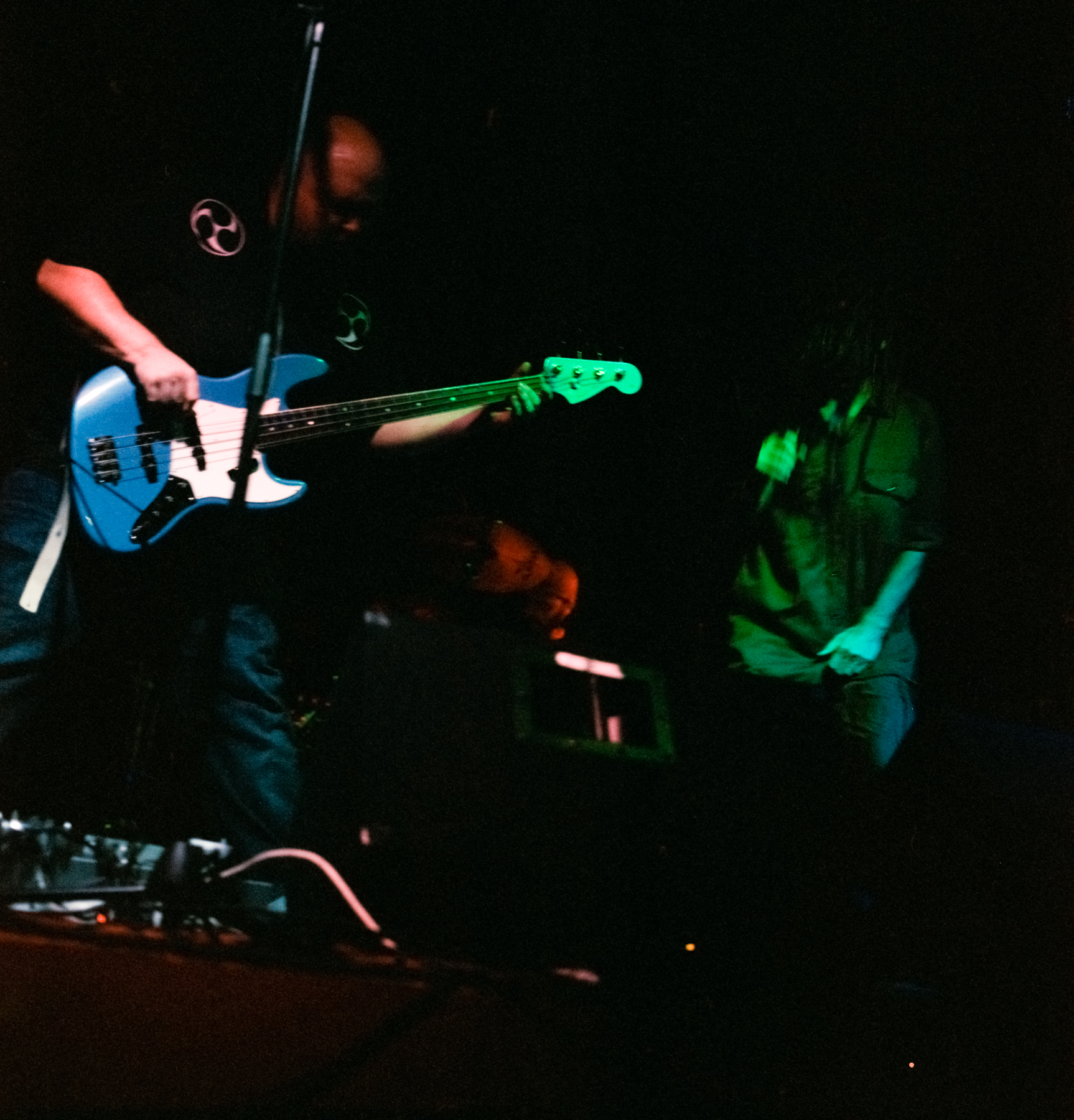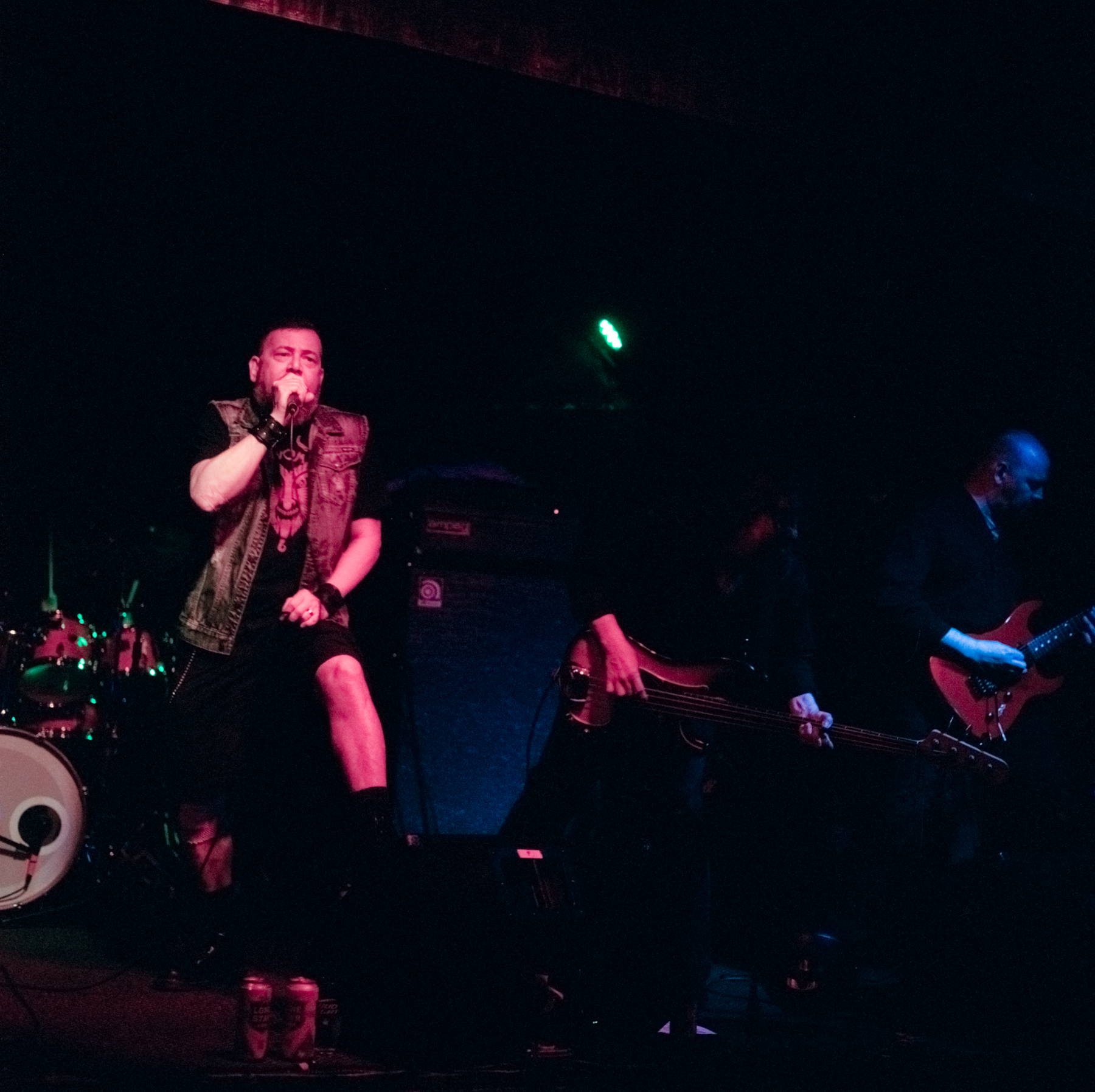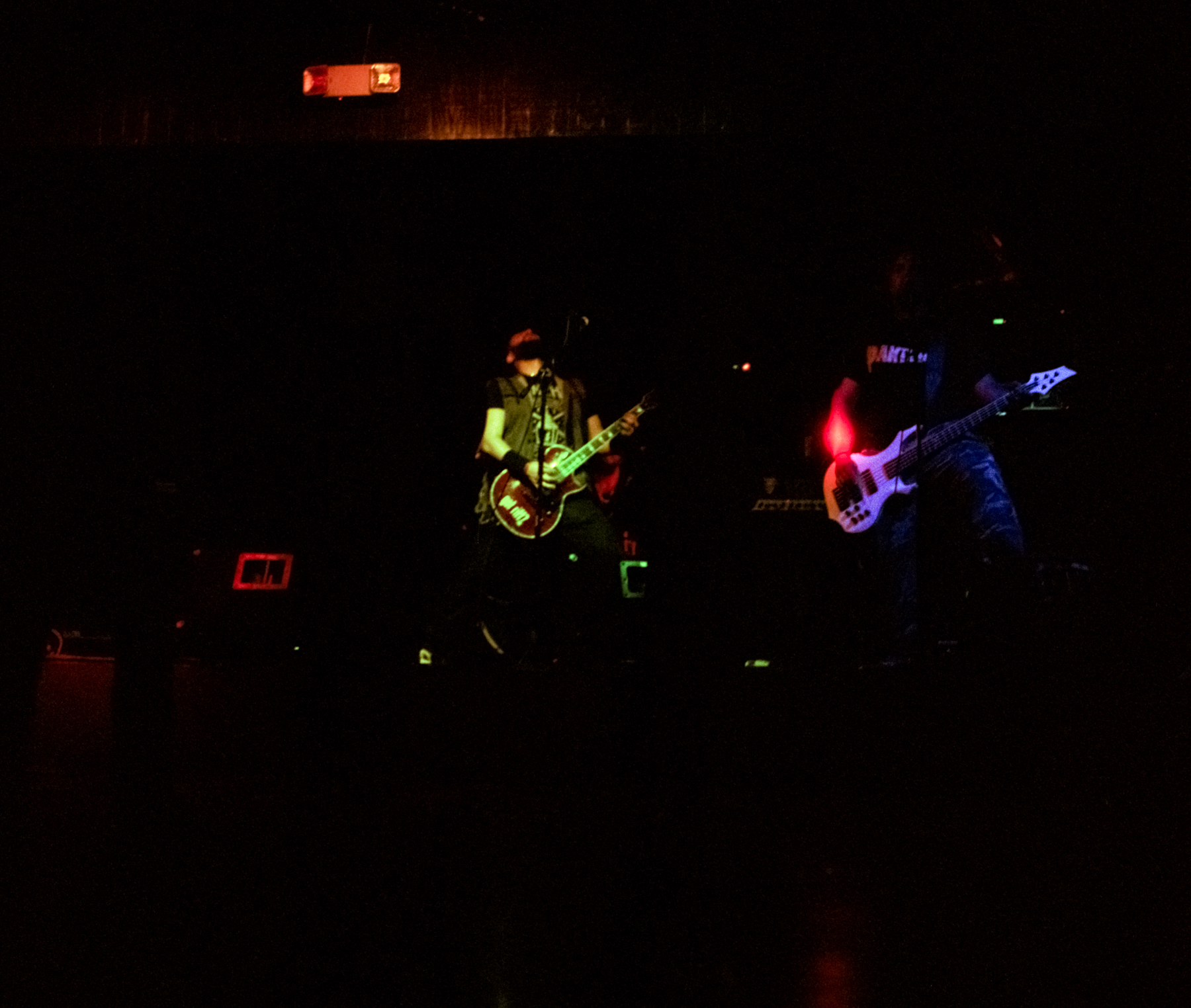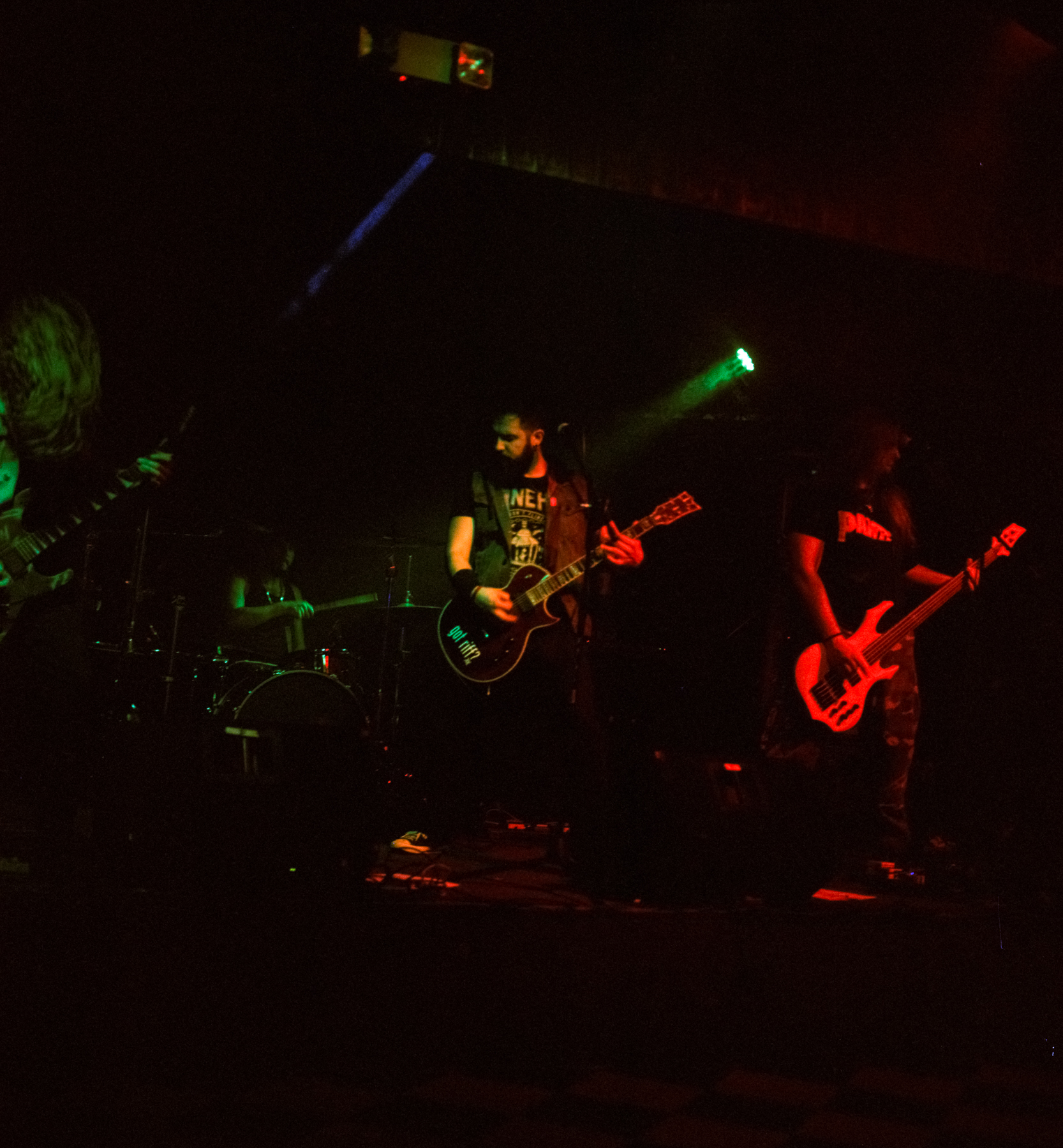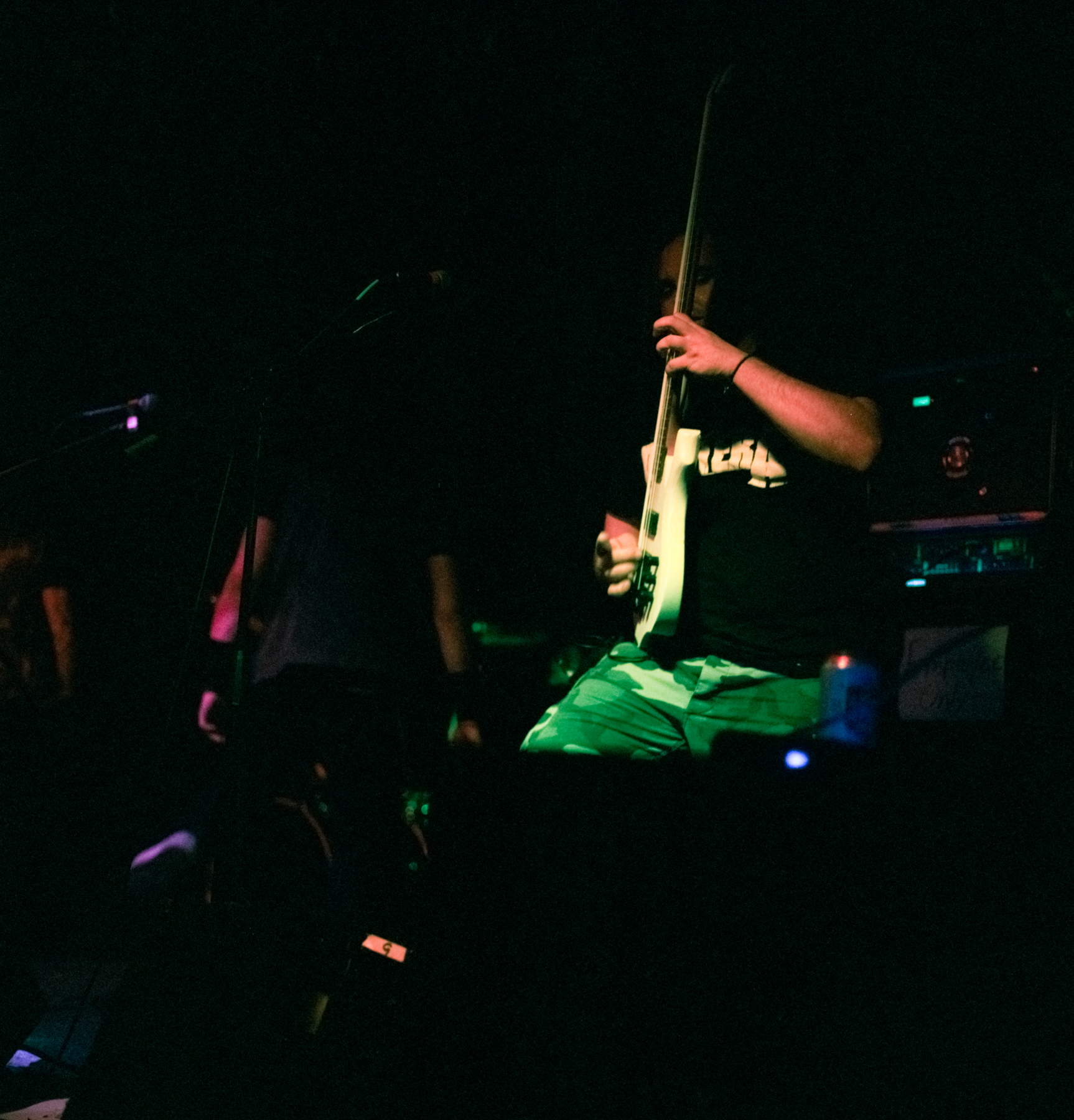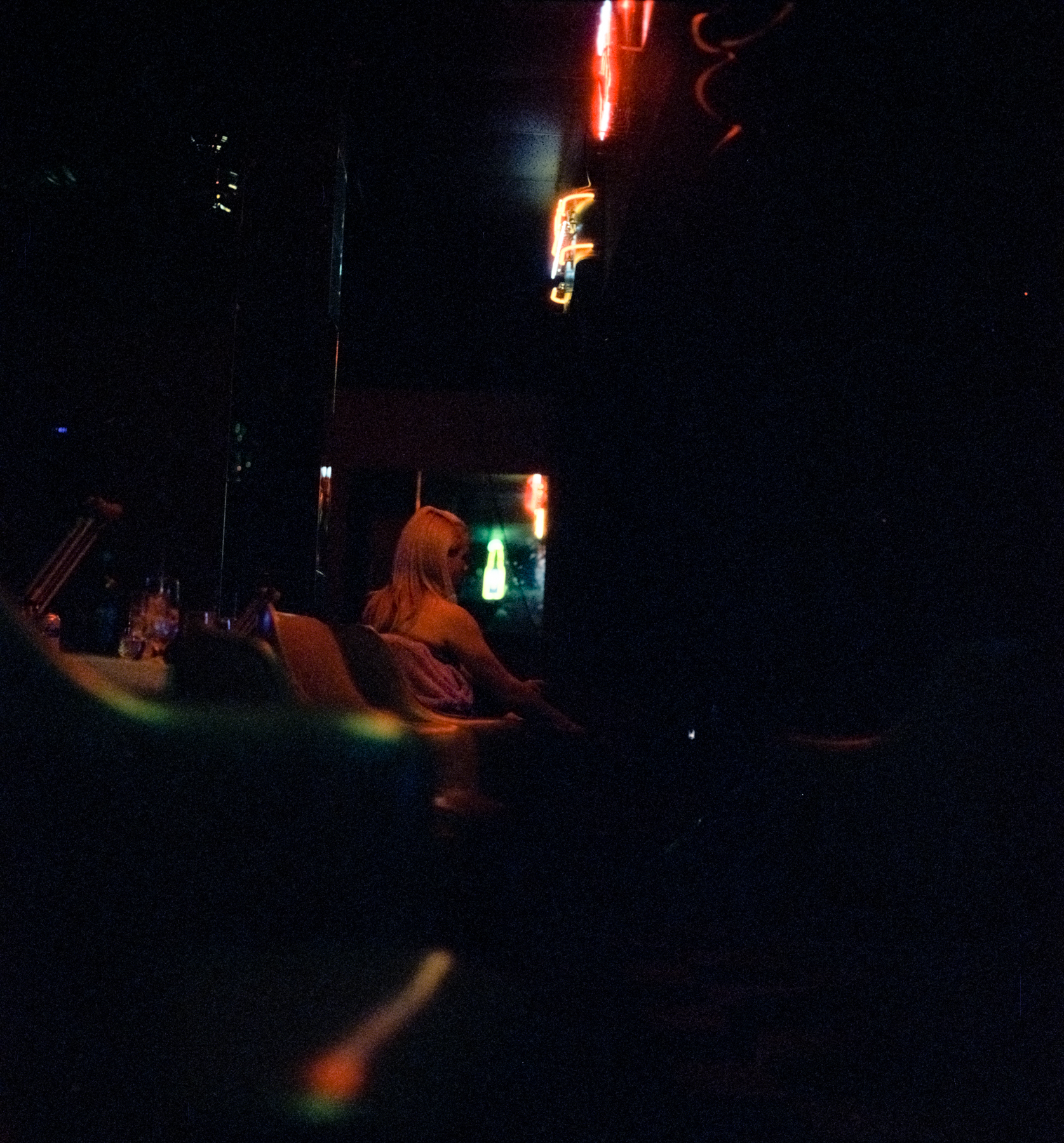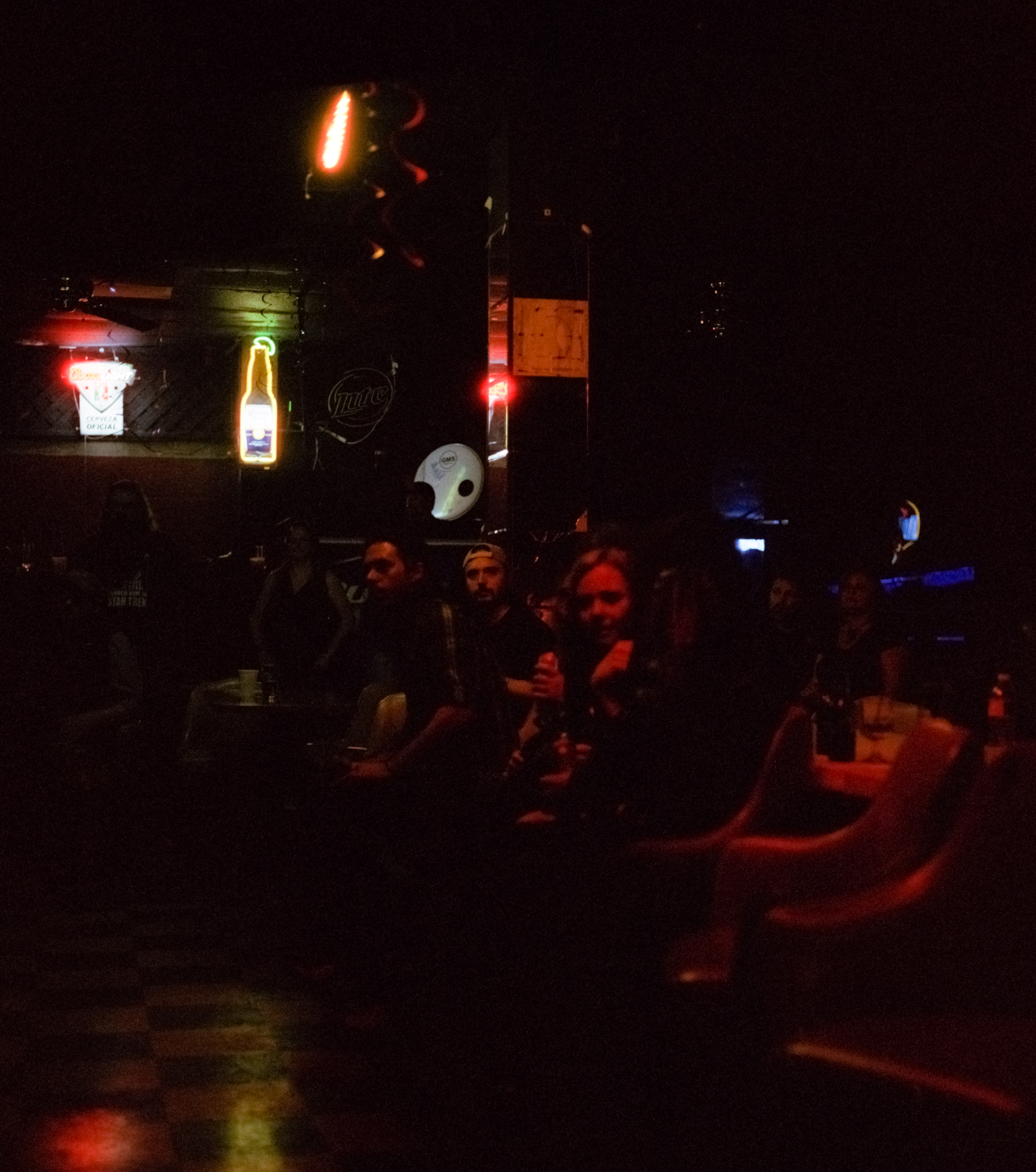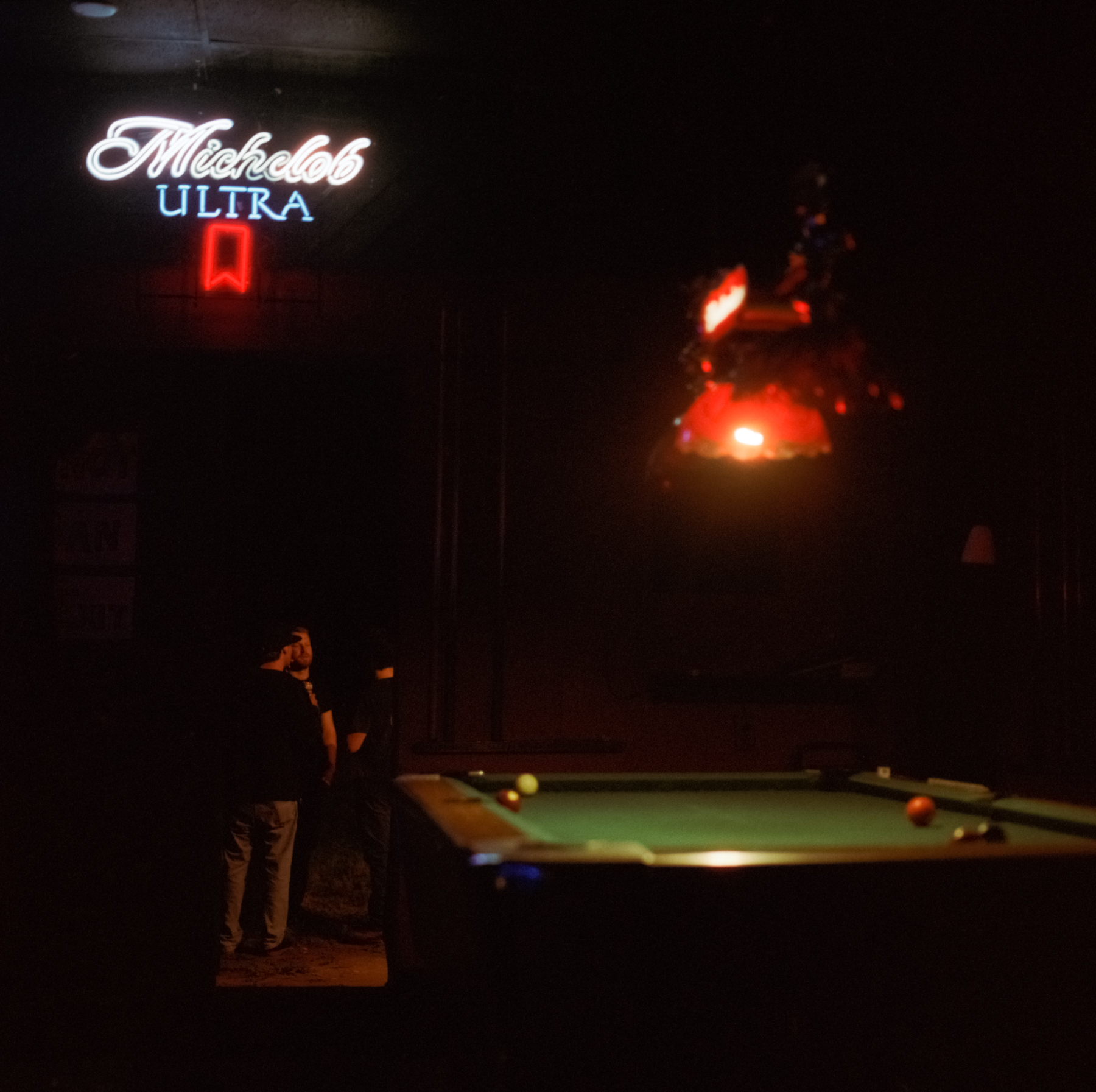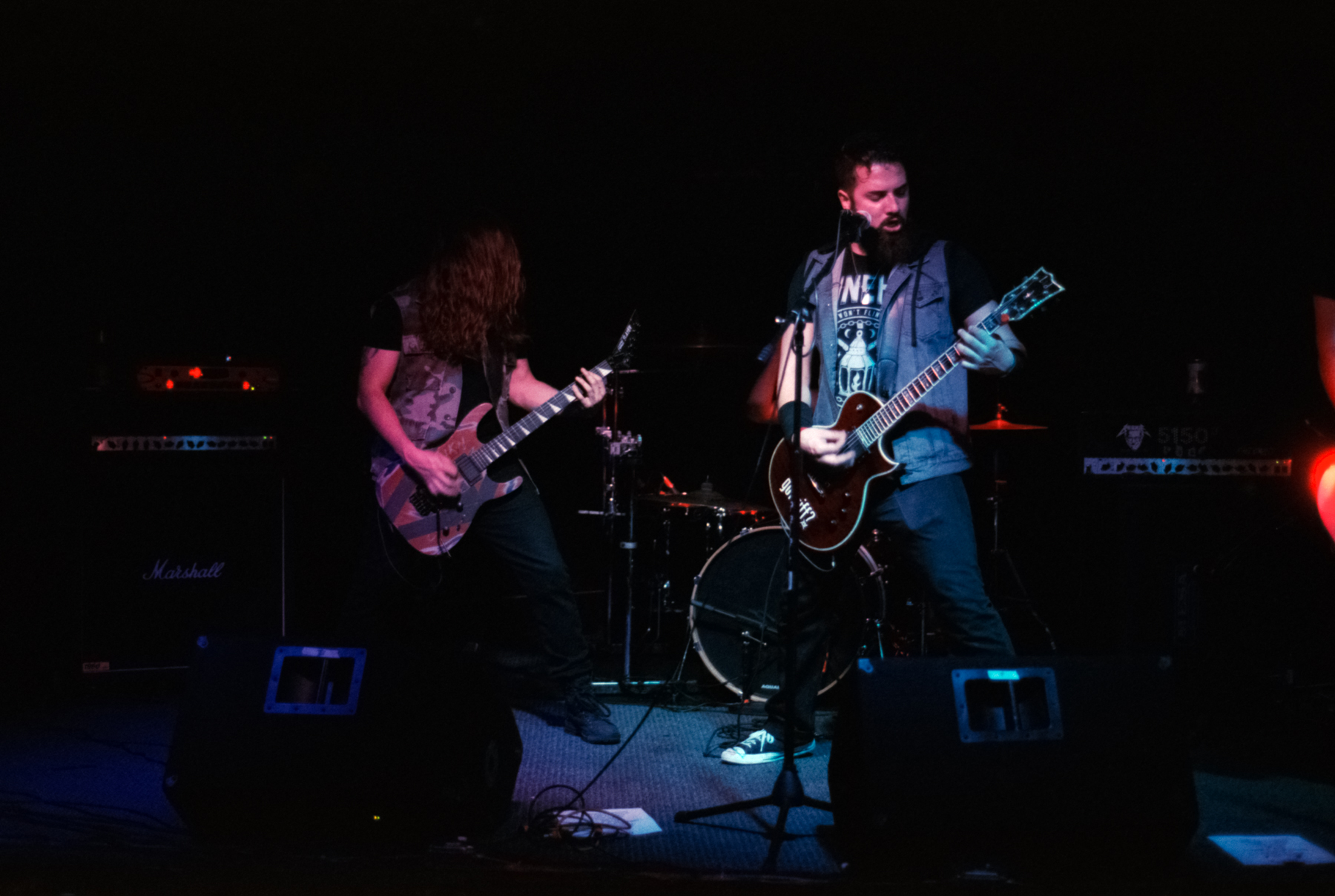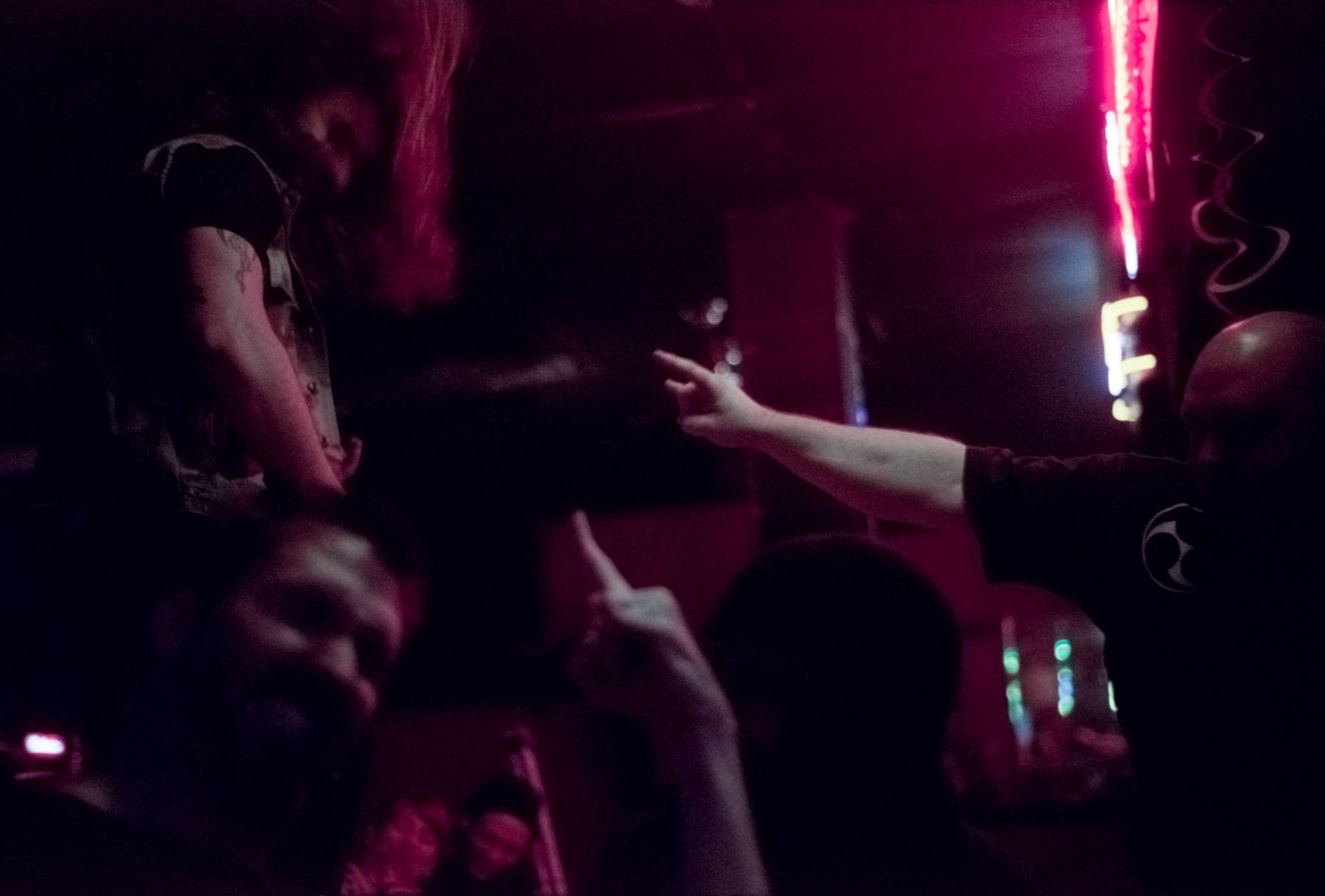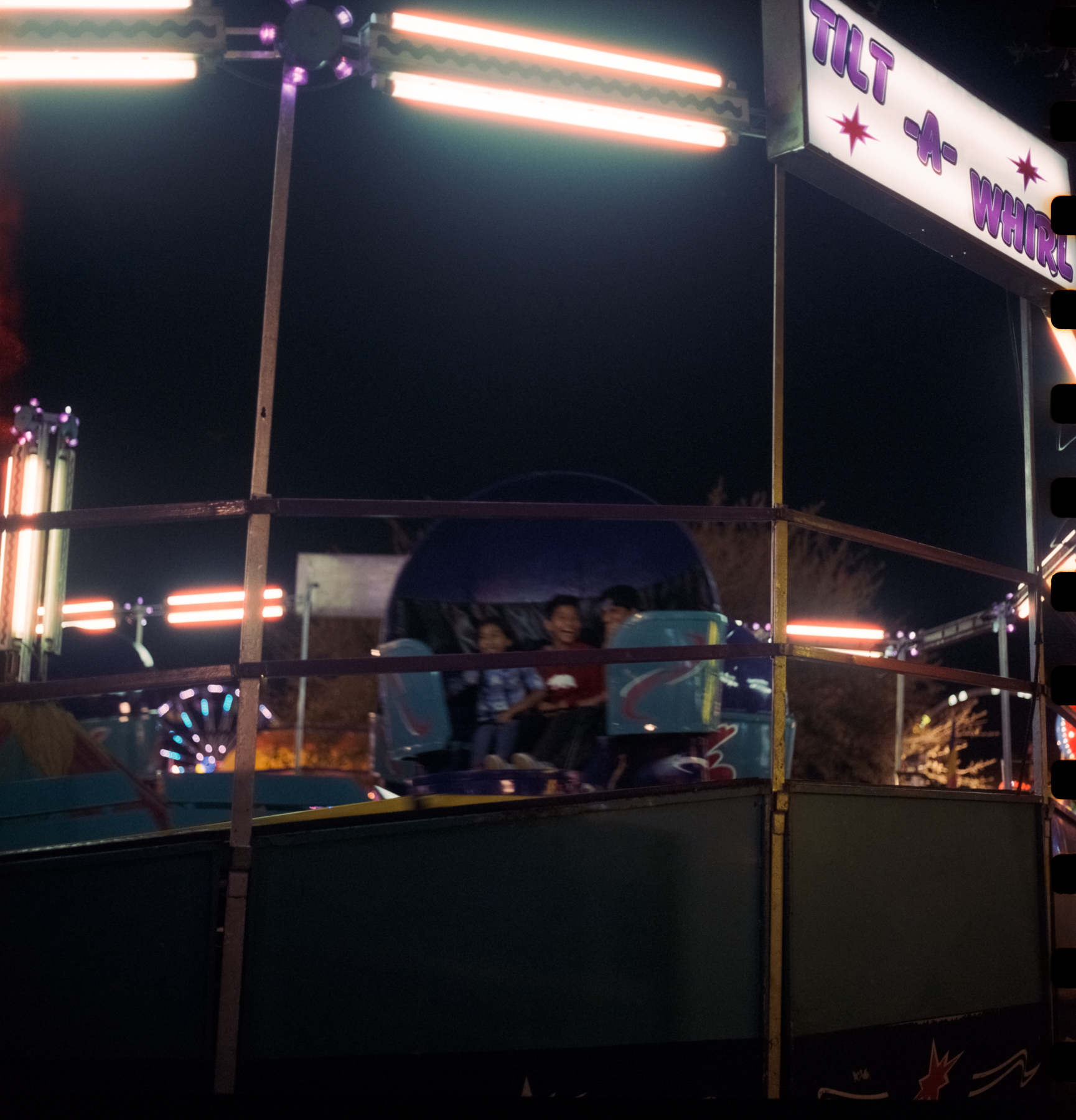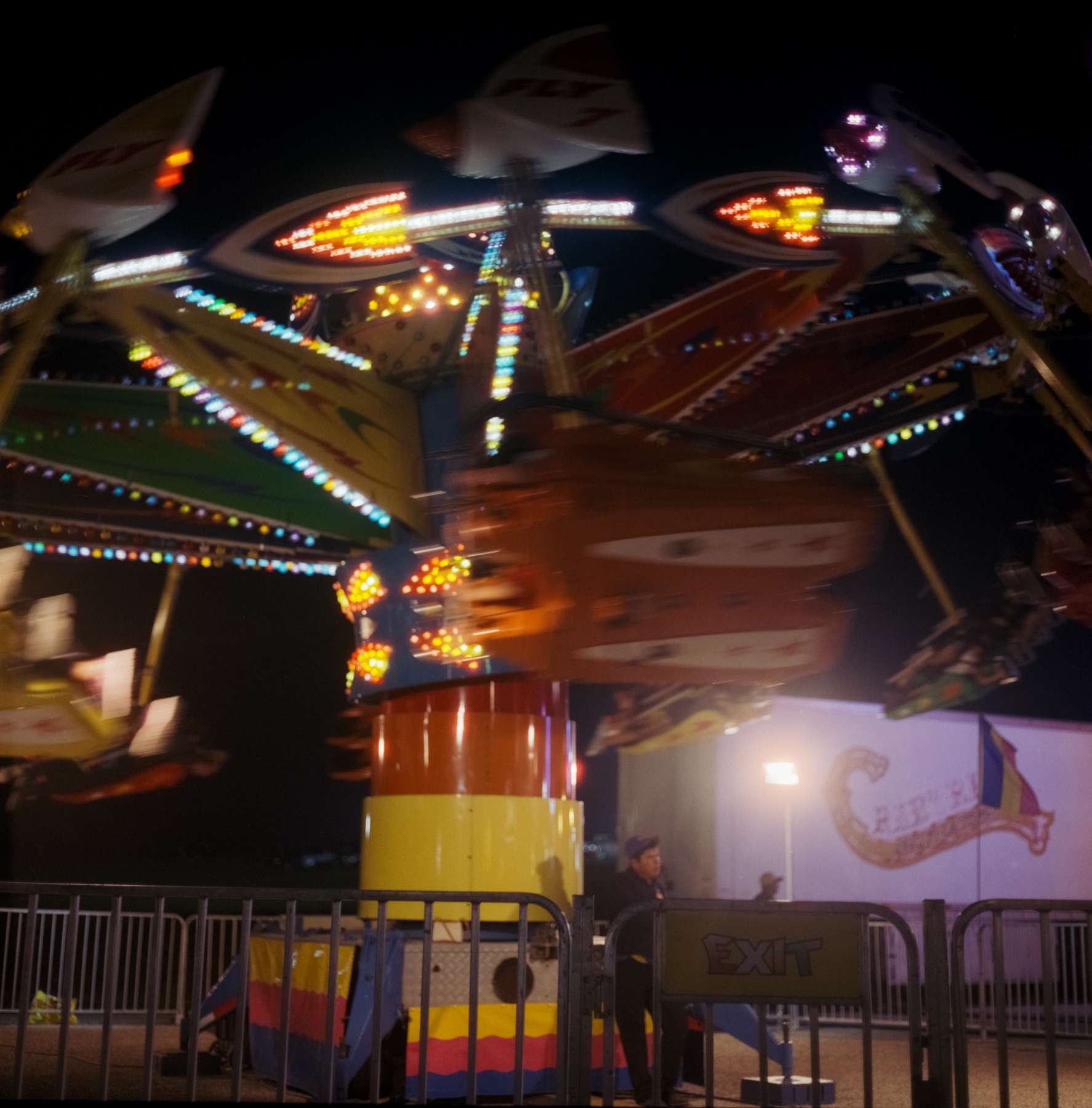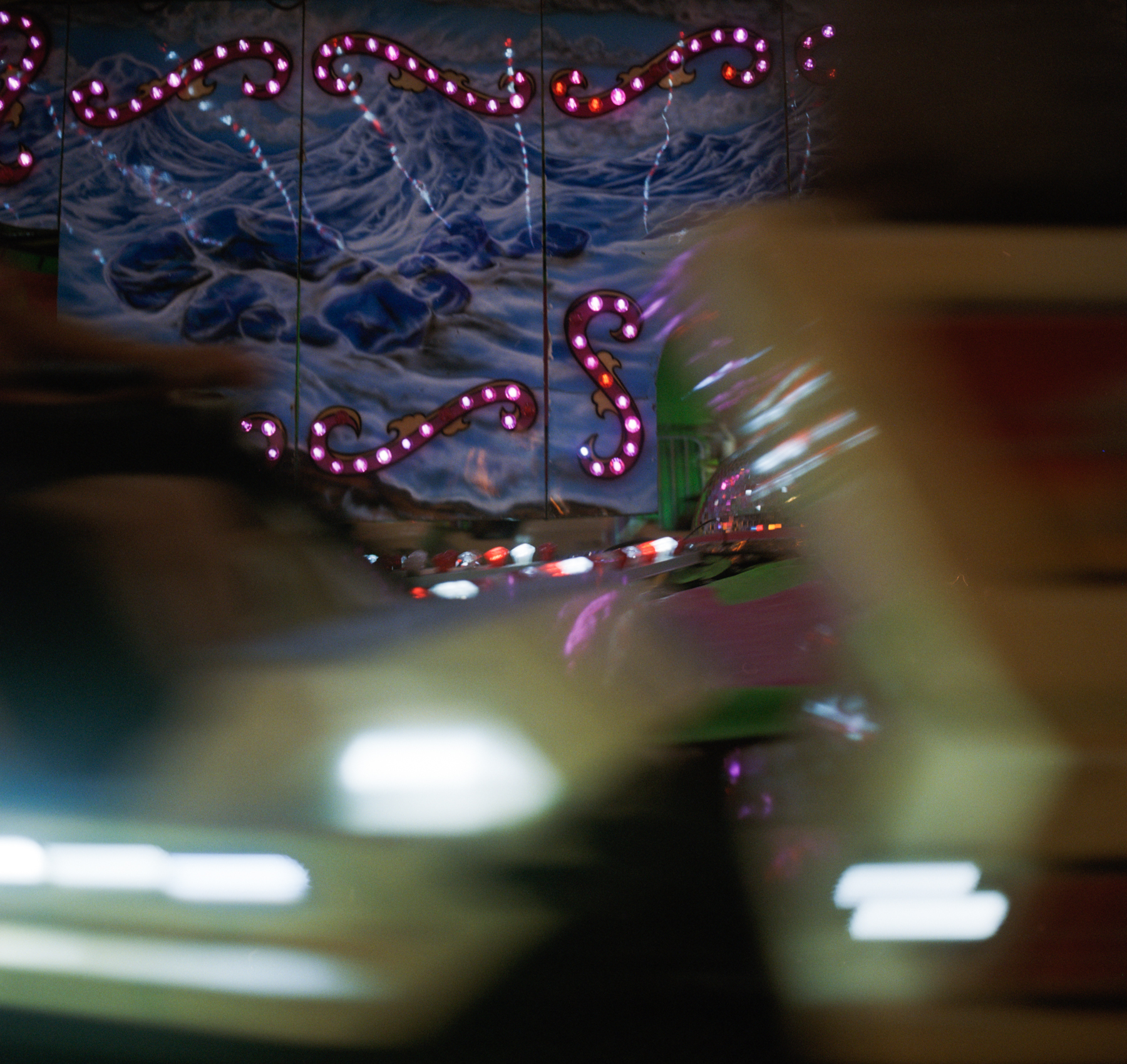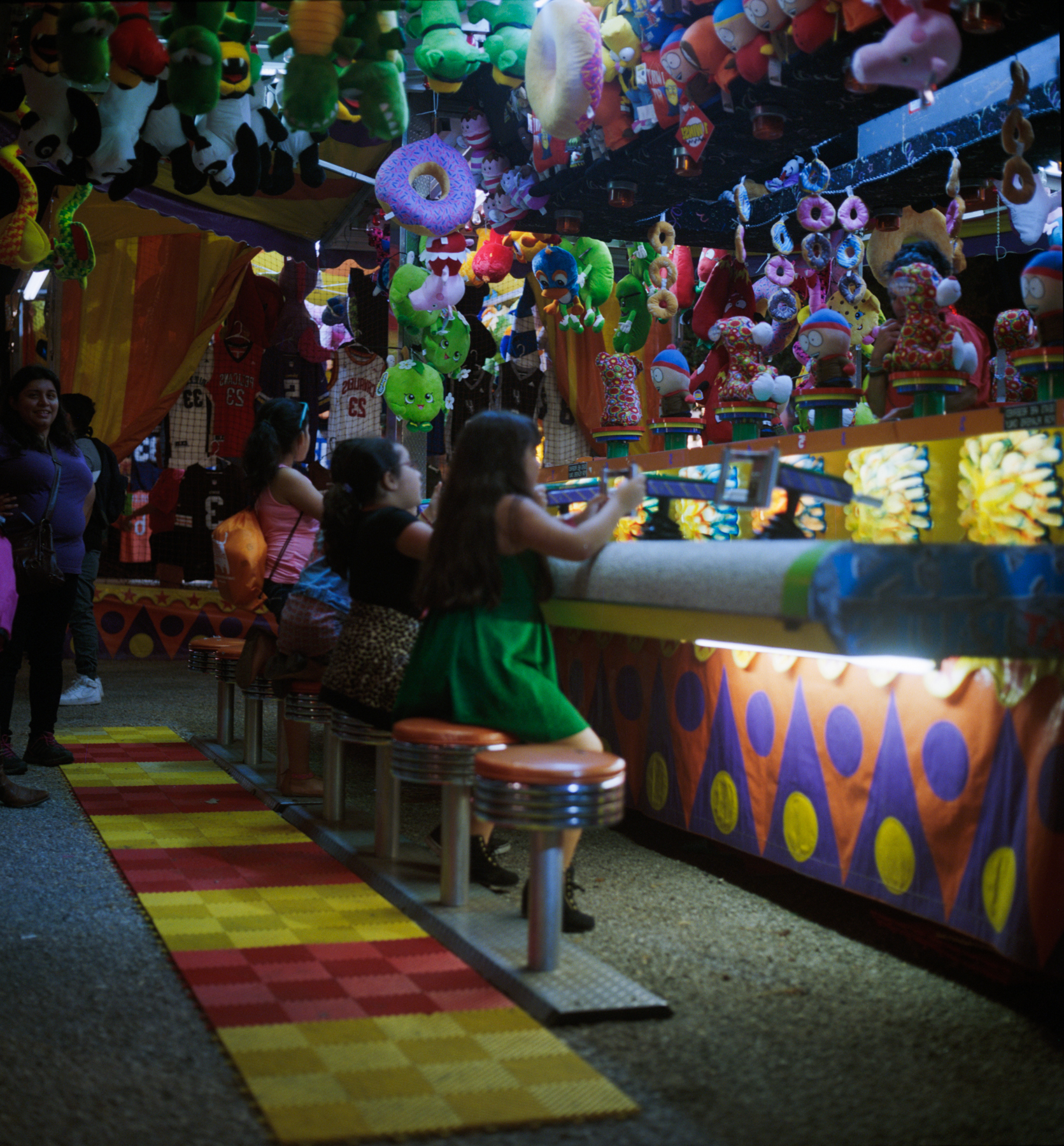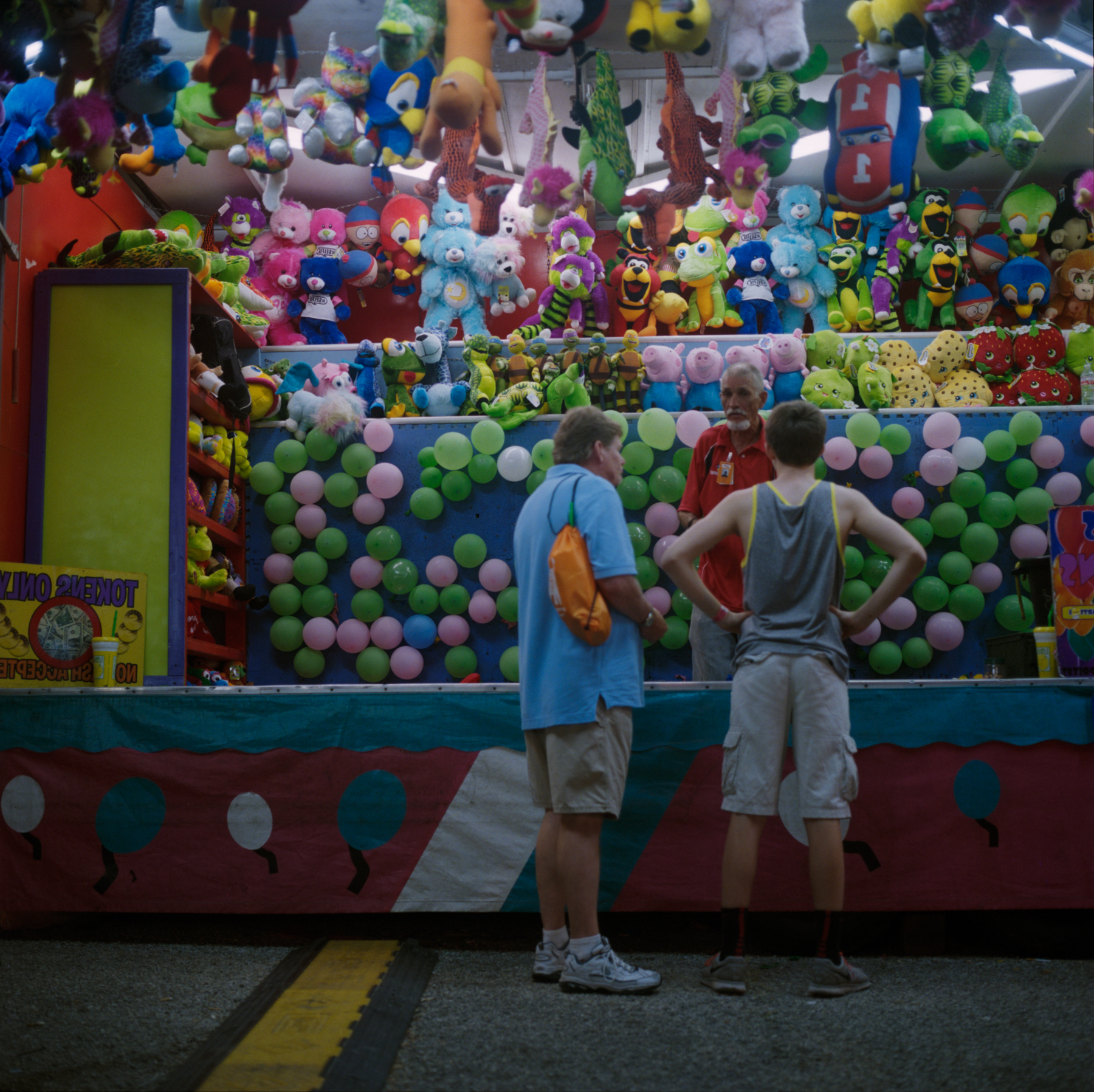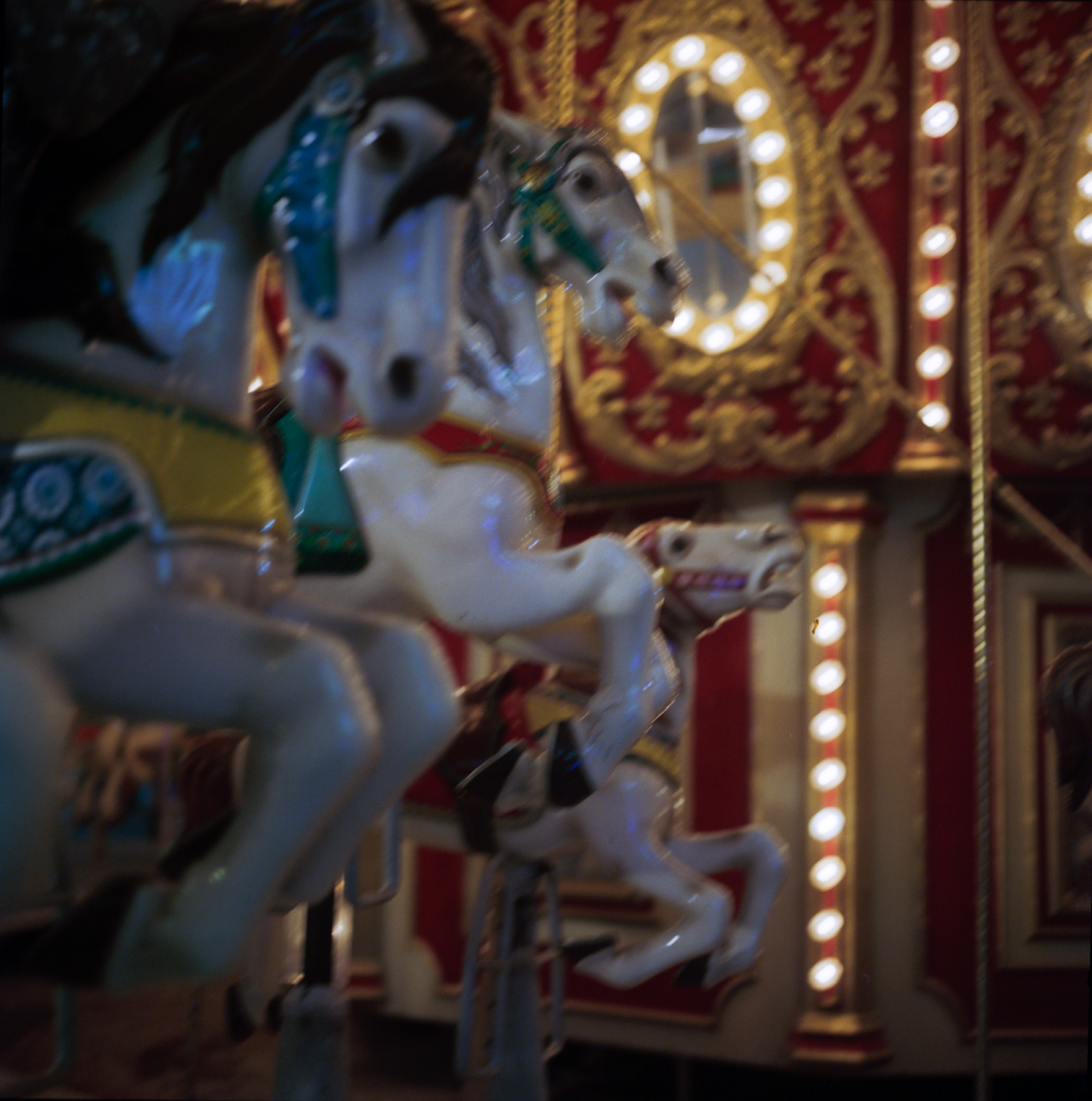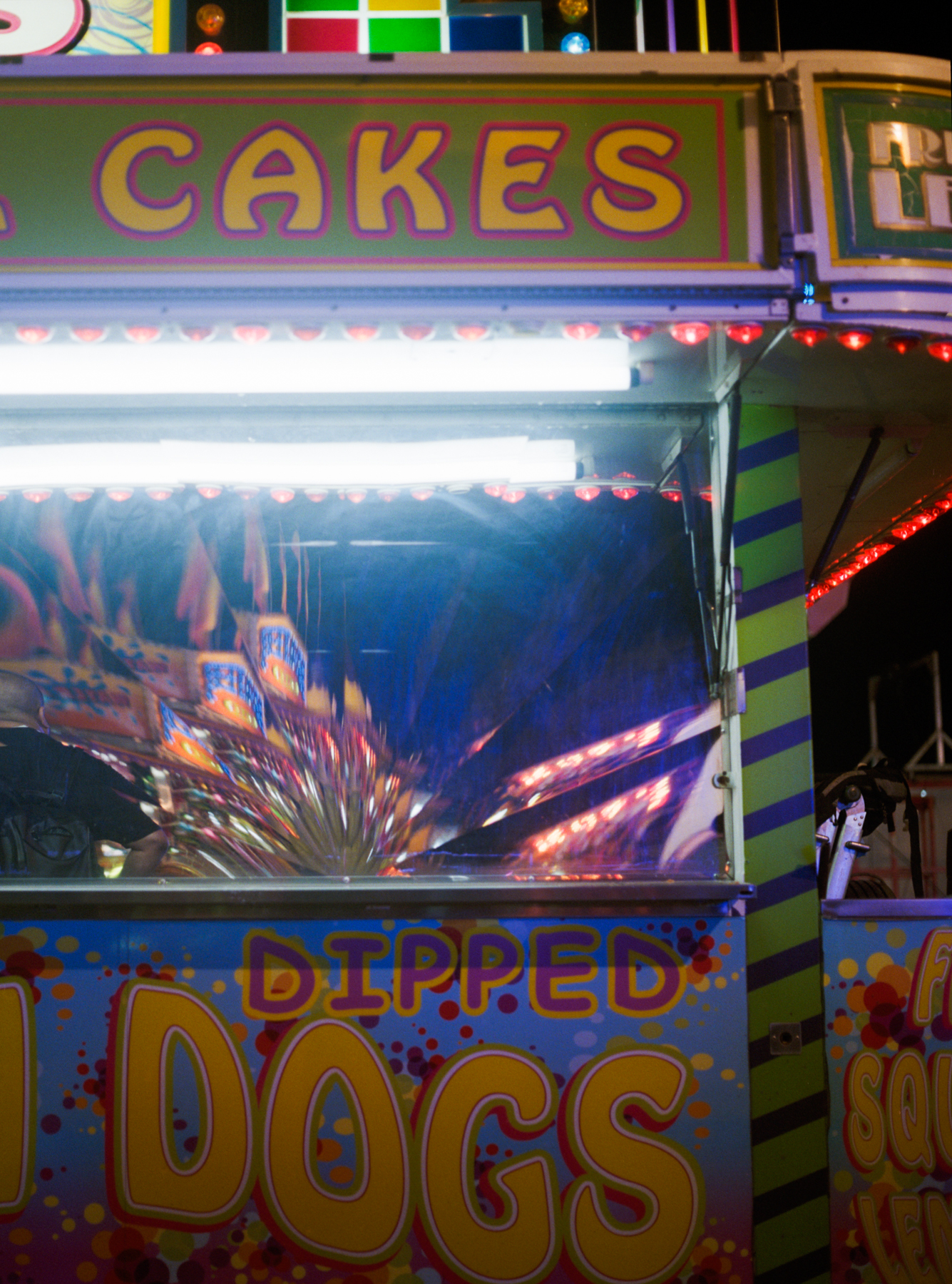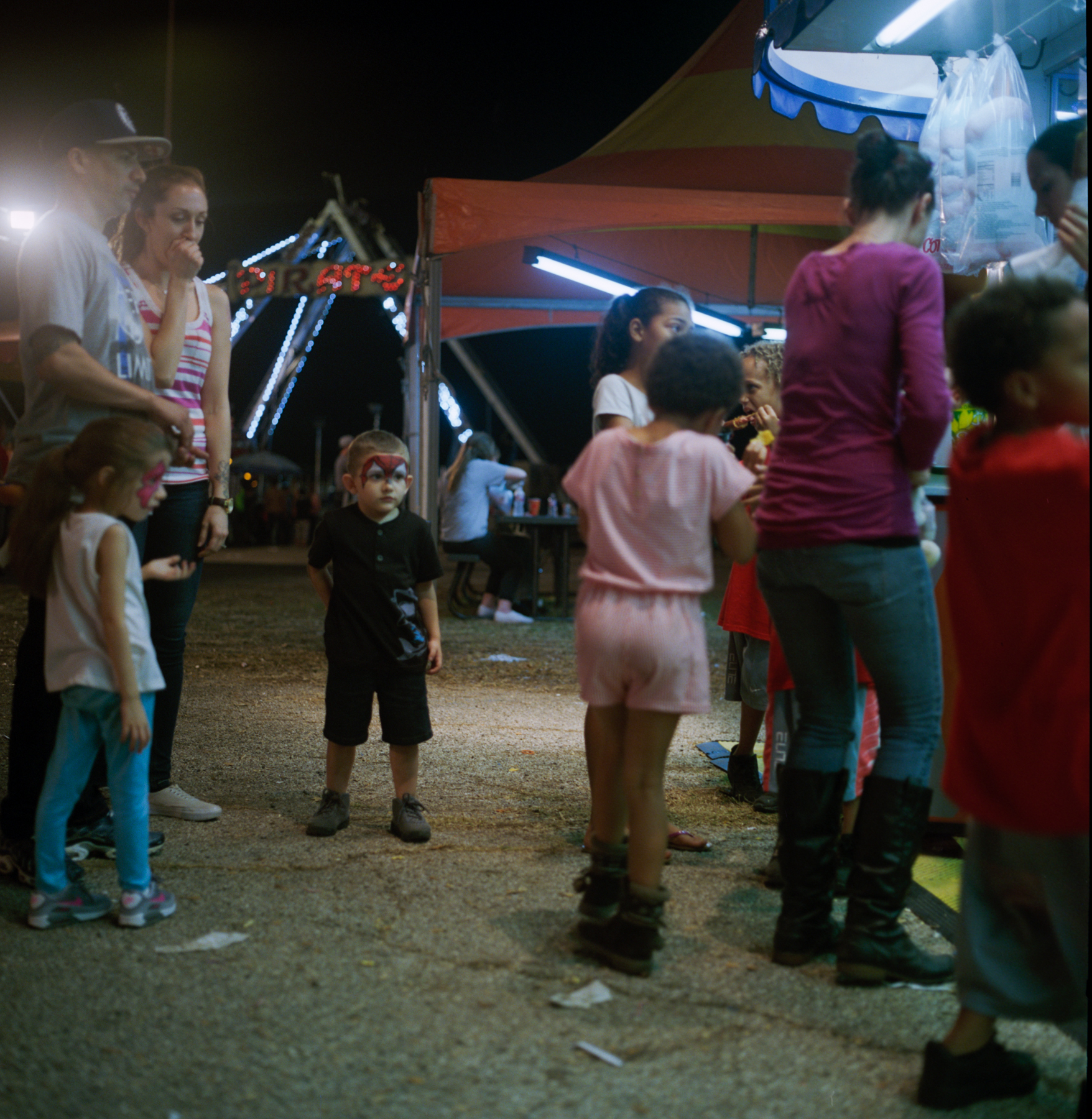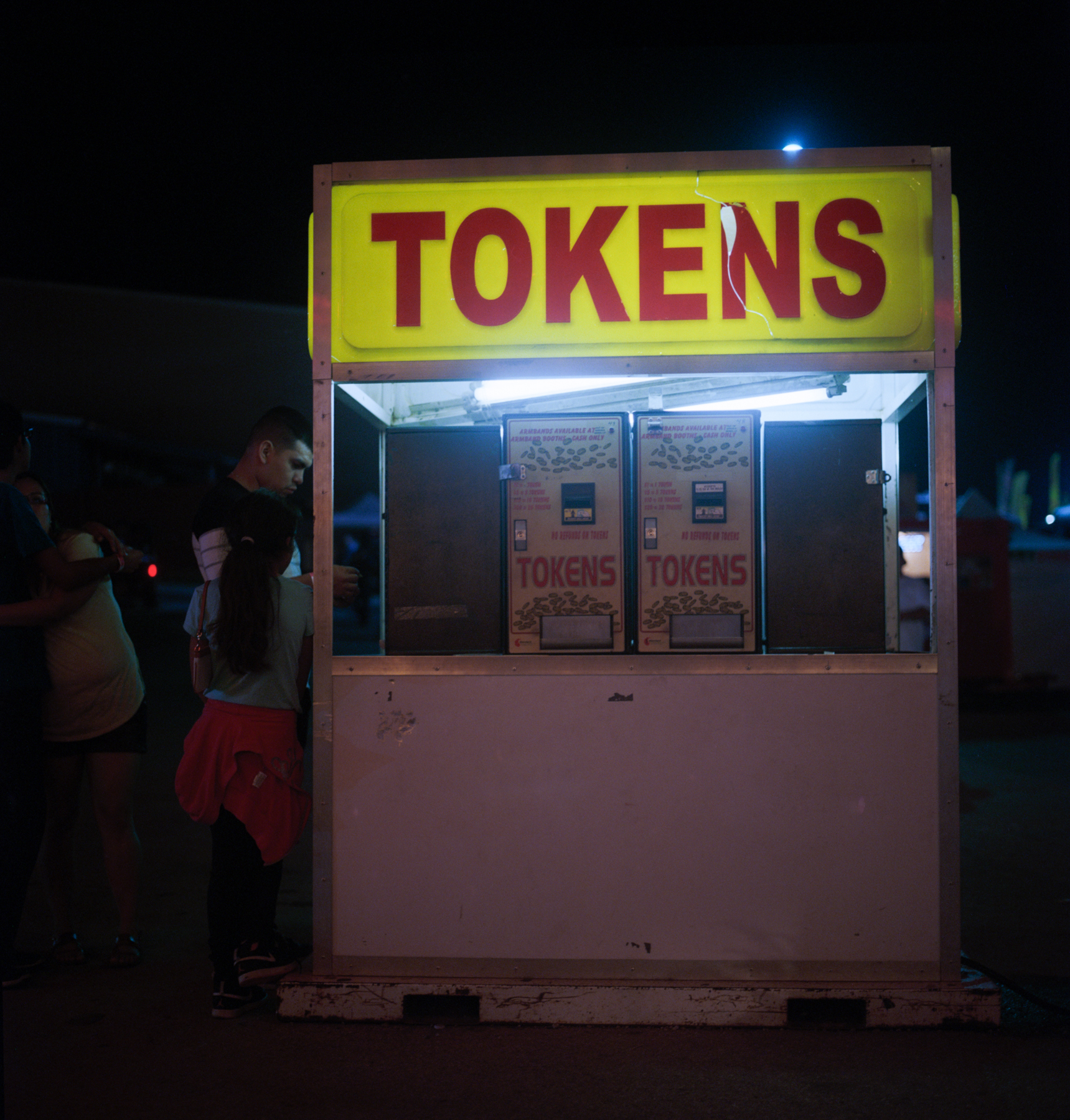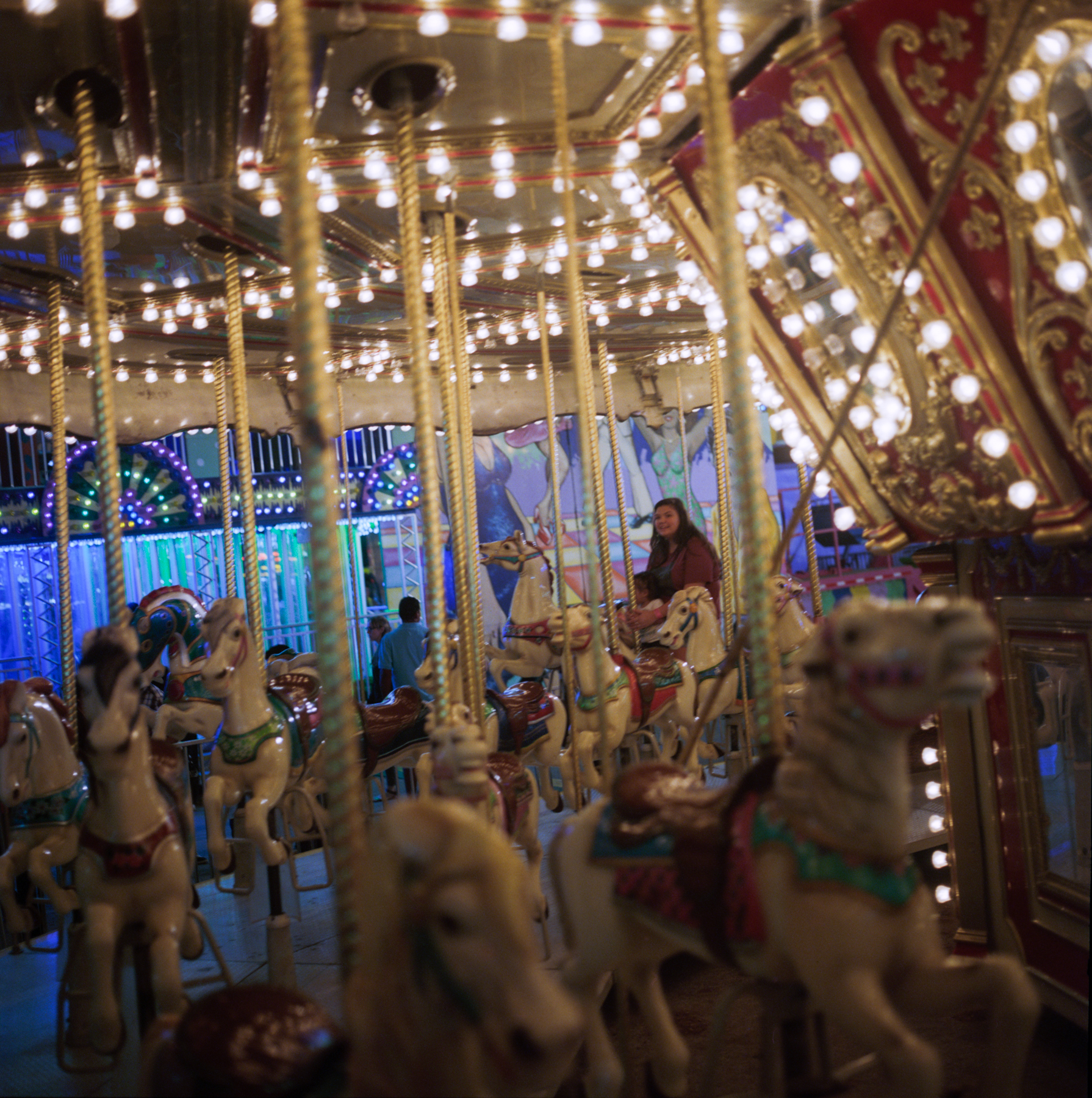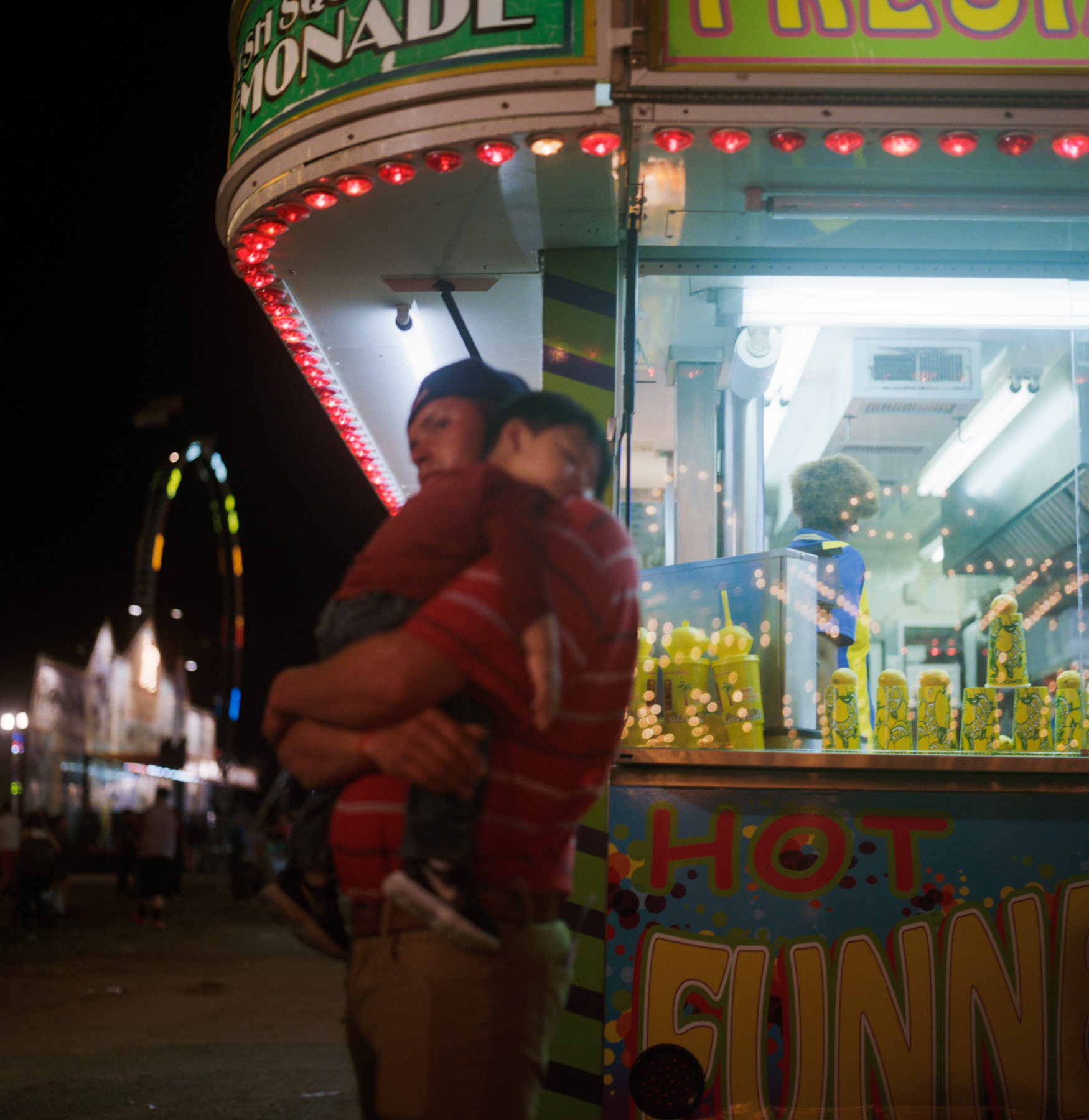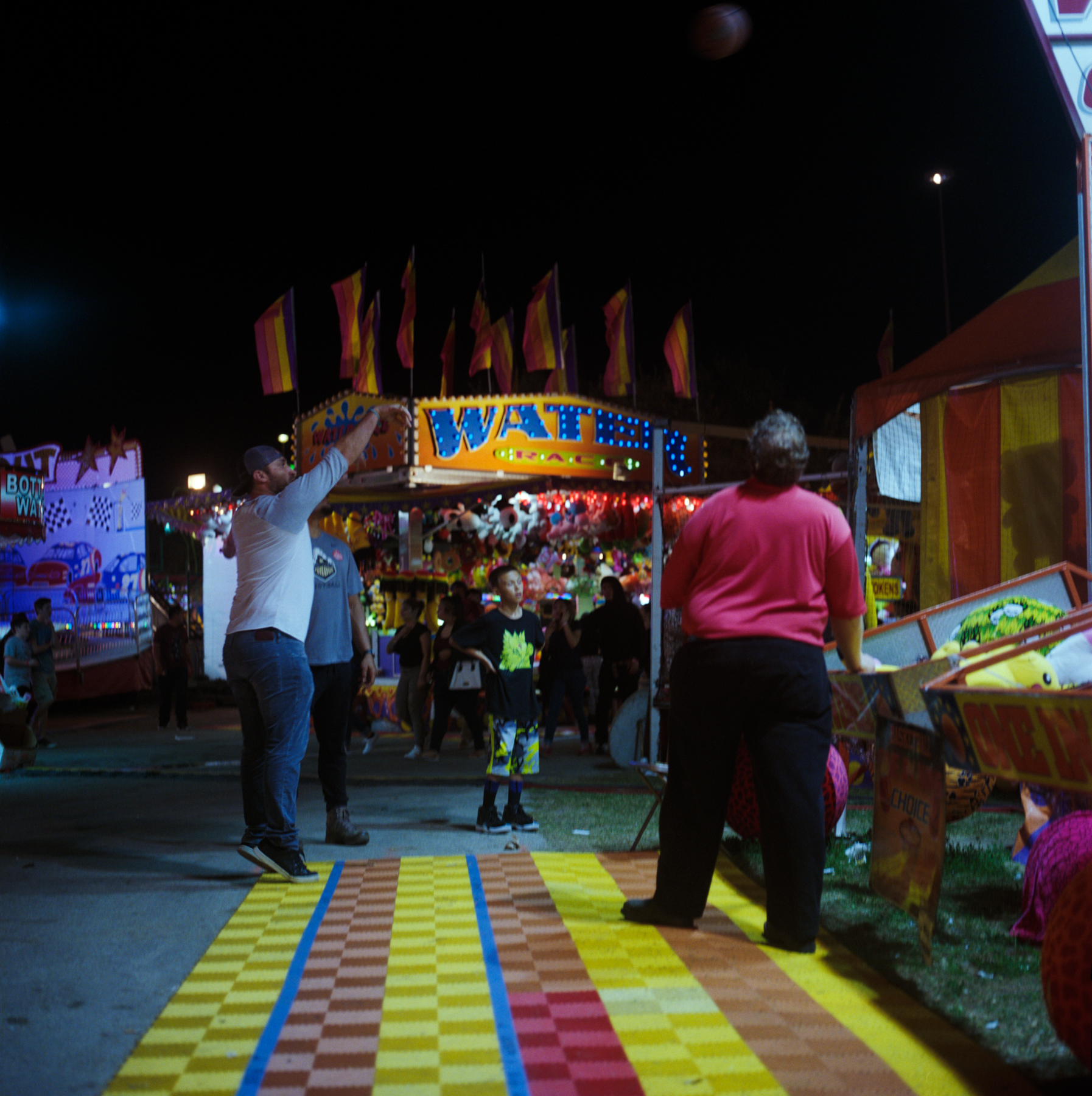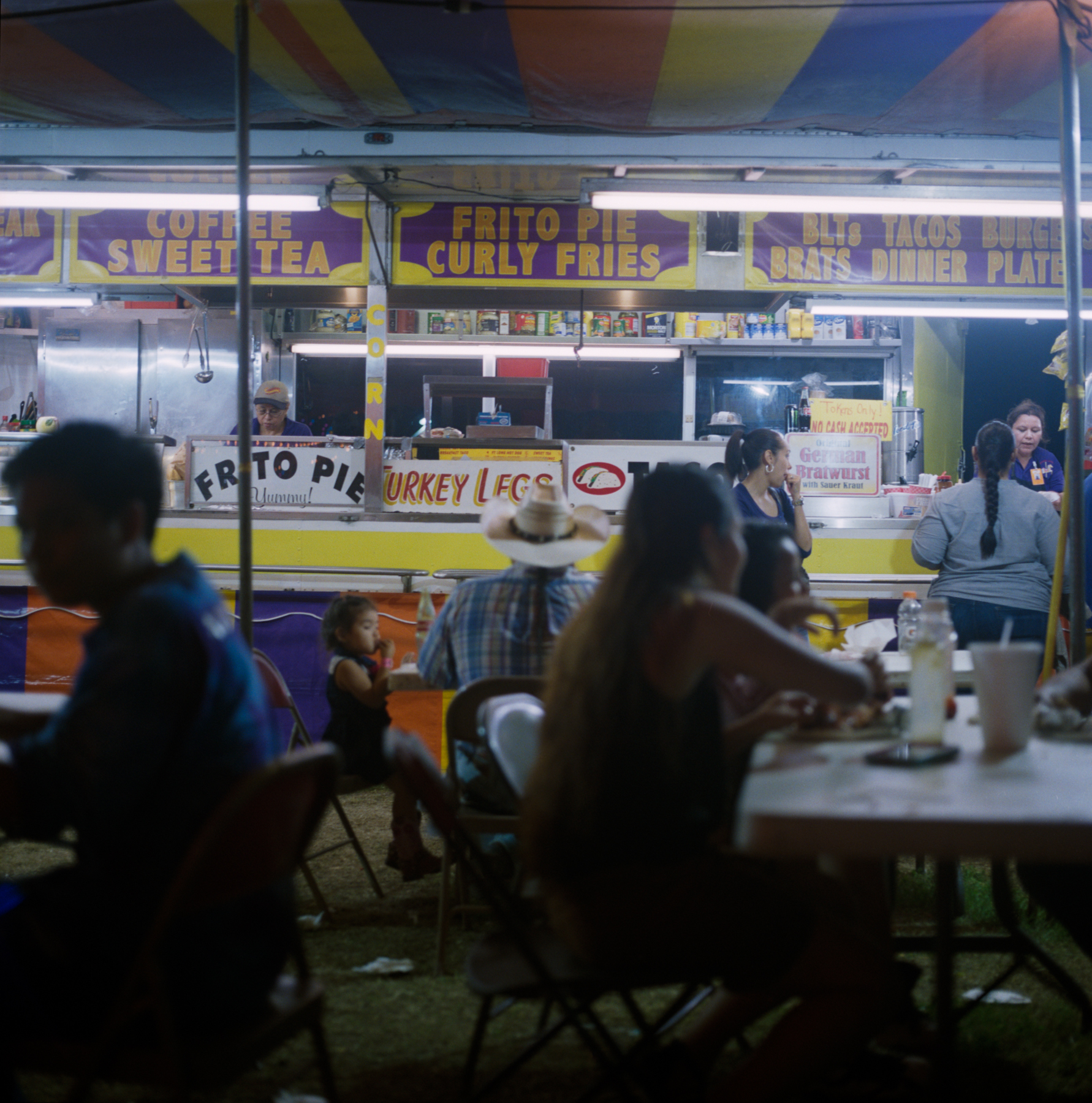Recently - oh happiness of happiness! - I received a beta roll of Cinestill 800T in medium format. I had been itching to get my hands on some ever since I first heard about the kickstarter; considering how much I enjoy the 35mm version, I couldn't wait to see how it performed in a larger format. I had never used my Hasselblad at night without a flash, and was keen to have that experience. And, having heard some people question why we as film photographers need 800T in the first place, since we already have Portra 800, I decided to compare the two. The Portra was also new to me, so I was pretty excited about the whole thing.
Never being one to do things the easy way, I decided to test it all out in one of the more difficult photographic situations: live music at a new local venue. If you have ever tried to photograph a band before, you have probably noticed that the lighting is nothing short of horrendous. But hey, why not?
As it turned out, it was so very dark in the bar that I decided to just make a few exposures with the Cinestill, and saved the rest for another day. I was so nervous about messing up that one precious roll that my mind went blank and I had to consult google to make sure I was loading the film back correctly. (I've used the Hasselblad for years; it's my main camera; yes it was that bad.) All things considering, I am pretty happy with the results.
I did not use a meter, opting to just go wide open at f2.8 and 1/60 instead with my 80mm lens. I didn't have the lab push the film at all either, although in hindsight since it's medium format it's possible that I could have done that without having too much grain. My experience with the 35mm film is that the grain becomes too much for me if I have it pushed at all. Just for the basis of comparison, here are a couple of 35mm Cinestill 800T photographs from the same venue. Again, no metering; Nikon FM2 with 50mm lens, f1.8 and 1/60.
Phase two of the project came a few nights later, when my daughter and I went to the rodeo. I trudged back to my jeep to retrieve my Hasselblad once it was dark outside, and I am so, so glad that I did. Carnivals are one of my very favorite things to photograph, and while I have used medium format for this before, it has not been with color. Below are Cinestill 800T, with Hasselblad 500cm, 80mm lens, f2.8 1/60. Mainly I am high fiving myself for not missing the focus.
Now for the conflict. When I initially had the idea for this article, it was in my mind that the Cinestill results would blow Portra out of the water. Keep in mind that I adore Cinestill film, in general, not only for what they are doing by plowing ahead with film in a digital world, but also for their wonderful product. But I have to say it. I LOVE THE PORTRA RESULTS. Same night, same camera, same settings. Here is the entire roll.
It's painful for me not to be able to draw the conclusion that I had hoped for, but I can't help noticing a greater depth and richness to the Portra; honestly, I think I like the 35mm version of 800T better. Is the Cinestill a great film? YES. Do we, as film photographers, need it? ABSOLUTELY. Could it be that the final version will be slightly different than the beta? Might my conclusion be slightly different if I had used the entire roll at the rodeo? Maybe the whole exercise is moot since in a way I am comparing apples and oranges / tungsten and daylight film. My mind will not be settled until I have tried another roll or two, so I am very much looking forward to receiving a package from them this summer.
Should you support Cinestill Film and buy the heck out of their products and see for yourself? OF COURSE YOU SHOULD! Click here for the link to their Indiegogo; I'm pretty sure you can still pitch in. While you're at it, get Kodak film too; the Old Dogs need just as much love as the young ones.


